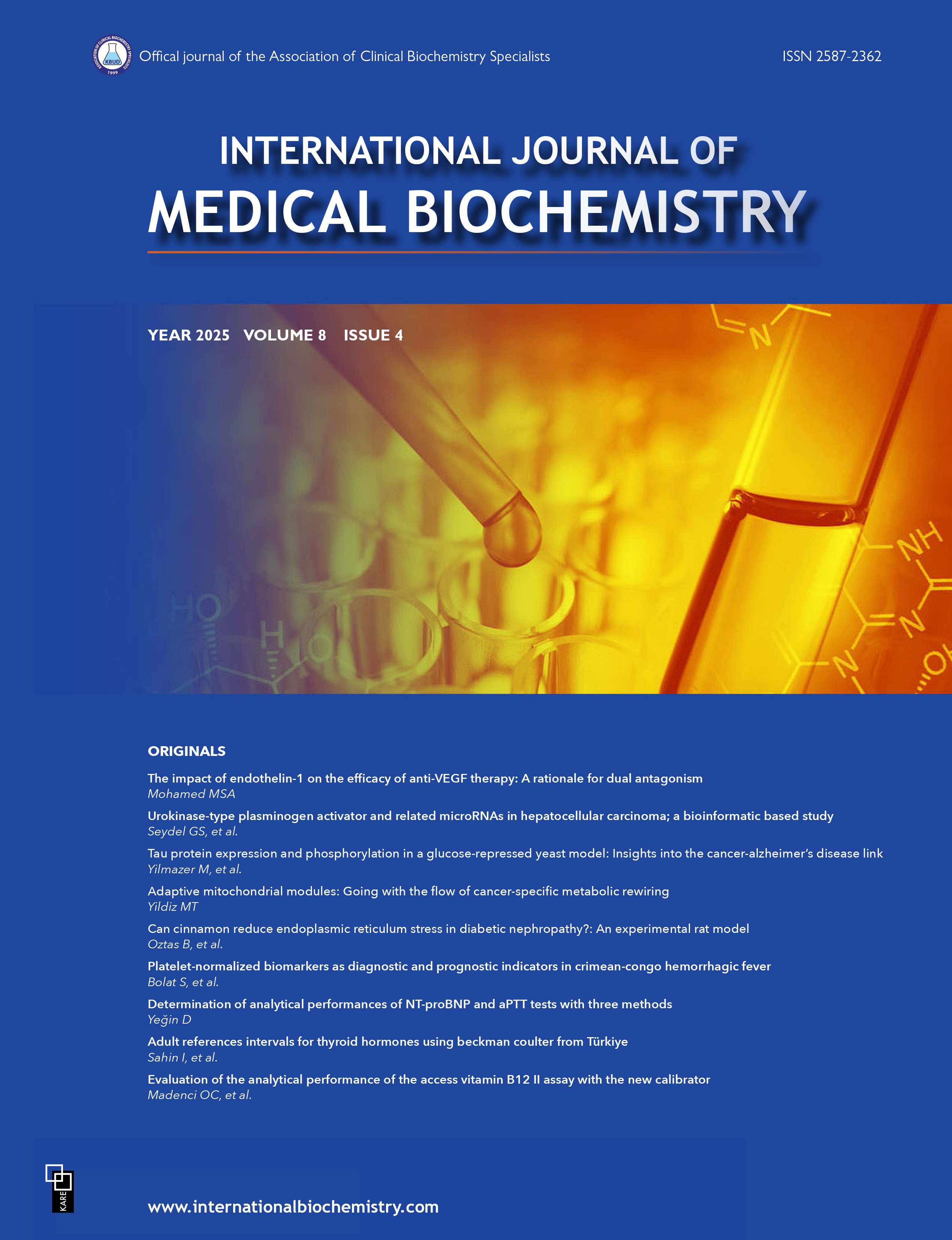Tau protein expression and phosphorylation in a glucose-repressed yeast model: Insights into the cancer-alzheimers disease link
Merve Yilmazer, Semian Karaer UzunerDepartment of Molecular Biology and Genetics, Istanbul University Faculty of Science, Istanbul, TürkiyeINTRODUCTION: The microtubule-associated protein tau, responsible for stabilizing microtubules, plays a role in the pathology of neurodegenerative diseases called tauopathies, including Alzheimer's disease. In Alzheimer's disease, neurofibrillary tangle formation is observed as a result of tau hyperphosphorylation. Although it is known that tau protein plays a role in many cellular processes, all of its functions have not yet been elucidated. The inverse relationship between Alzheimer's disease and cancer has been a topic of research that has attracted attention in recent years. In addition, the role of tau protein in cancer has also gained importance with the determination of its direct relationship with DNA. In particular, the negative correlation between Alzheimer's disease and cancer points to two extremes of a common mechanism. Discovering a common molecule or pathway will allow understanding the cause of both diseases and developing treatments.
METHODS: In this study, we obtained a cell model that mimics cancer metabolism by creating aerobic glycolysis-like conditions with glucose repression in S. pombe cells heterologously expressing human tau protein. We examined tau protein expression and phosphorylation (S262, S396 and S404) and various cellular processes (glucose metabolism, stress response, ER stress, autophagy, 20S proteosome activity, intracellular oxidation) at the molecular level in model cells.
RESULTS: Under aerobic glycolysis-like conditions, we observed an approximately 2-fold increase in tau protein expression. In addition to this increase, we determined that the amount of phosphorylation at S396 residue of tau protein was decreased, while phosphorylation at S262 and S404 residues was increased.
DISCUSSION AND CONCLUSION: These fndings suggest a potential divergence in tau regulation under altered metabolic conditions, warranting further investigation.
Keywords: Cancer, glucose repression, heterologous expression, tauopathy, tau protein
Manuscript Language: English







